Part 2 of 2 parts (Please read Part 1 first)
Despite decades of decline, the U.S. nuclear fleet continues to supply about twenty percent of the nation’s electricity. Rather than wait years for SMRs to be permitted and built, an interim plan is being drafted for the prevention of further nuclear plant closures and upgrading of the plants so they last another few decades.
Lucas Johnson is with the Nuclear Energy Institute. He said, “The U.S. boasts the highest performing nuclear reactor fleet in the world. License renewals will ensure that clean energy, that would otherwise be lost if a plant were to shut down at the end of its license, will continue to serve as a foundation.”
The Inflation Reduction Act (IRD), along with actions at the state level, has assisted nuclear power plants to compete economically with other forms of energy. IRA funding is being used to restart the Palisades nuclear plant in Michigan.
A one and a half billion dollar commitment was made to Holtec Palisades to recommission the eight hundred megawatt Palisades Nuclear Power Plant in Covert Township, Michigan with the goal of job creation and emissions reduction. Holtec, the owner of the plant is waiting for licensing approval from the NRC and has arranged long-term power purchase agreements (PPAs) for the full output of the facility to local utilities.
This plant stopped operating in May 2022 due to lack of funding for extensive upgrades. However, the realities of having a stable grid and providing enough power for AI have caused lawmakers to backtrack from their once staunch anti-nuclear stance. The current administration is now solidly aboard the nuclear energy train.
Jennifer Granholm is the U.S. Secretary of Energy. She said, “Nuclear power is our single largest source of carbon-free electricity, directly supporting 100,000 jobs across the country and hundreds of thousands more indirectly.
Palisades will have its equipment upgraded to current standards with the goal of producing baseload clean power until at least 2051. In addition, Holtec intends to place two SMRs on the site which would add about eight hundred megawatts of additional generation capacity. Plans will be announced by AWS or another hyperscaler or colocation provider to site data centers nearby. Bahran said, “There are already many agreements in place for data centers to be located near existing and planned nuclear plants.”
It may be reasonable for a large colocation provider or hyperscaler to adopt their own SMR. But the cost may be beyond most data center operators. Bahran envisions a business model where several data centers may gather around one SMR to achieve economies of scale.
Bahran added, “With an SMR providing roughly twenty to thirty megawatts and AI data centers having widely variable energy demands, you could have one SMR in an area with multiple users.”
He noted the safety and security benefits of nuclear technology. In the event of a complete loss of power, current nuclear facilities are designed to safely shut down on their own. However, such large critical infrastructure assets pose cybersecurity concerns. They must be protected against cyber-attack or a physical security breach.
Finally, the supply of uranium needs to be guaranteed. Bahran mentioned that there is a need to expand US nuclear fuel sources. He said, “Investment is being made to ensure we have all the parts of the supply chain for a nuclear future.
Blog
-

Nuclear Reactors 1399 – The U.S. Government Is Promoting Nuclear Power For Data Centers – Part 2 of 2 Parts
-
Nuclear News Roundup May 28, 2024
Bulgaria intends to stop purchasing Russian nuclear fuel news.az
European powers seek to censure Iran at UN nuclear meeting hurriyetdailynews.com
Energy chief wants to triple nuclear, Georgia Gov. supports 5th Vogtle unit bondbuyer.com
Saskatchewan SMR to be located in Estevan world-nuclear-news.org
-
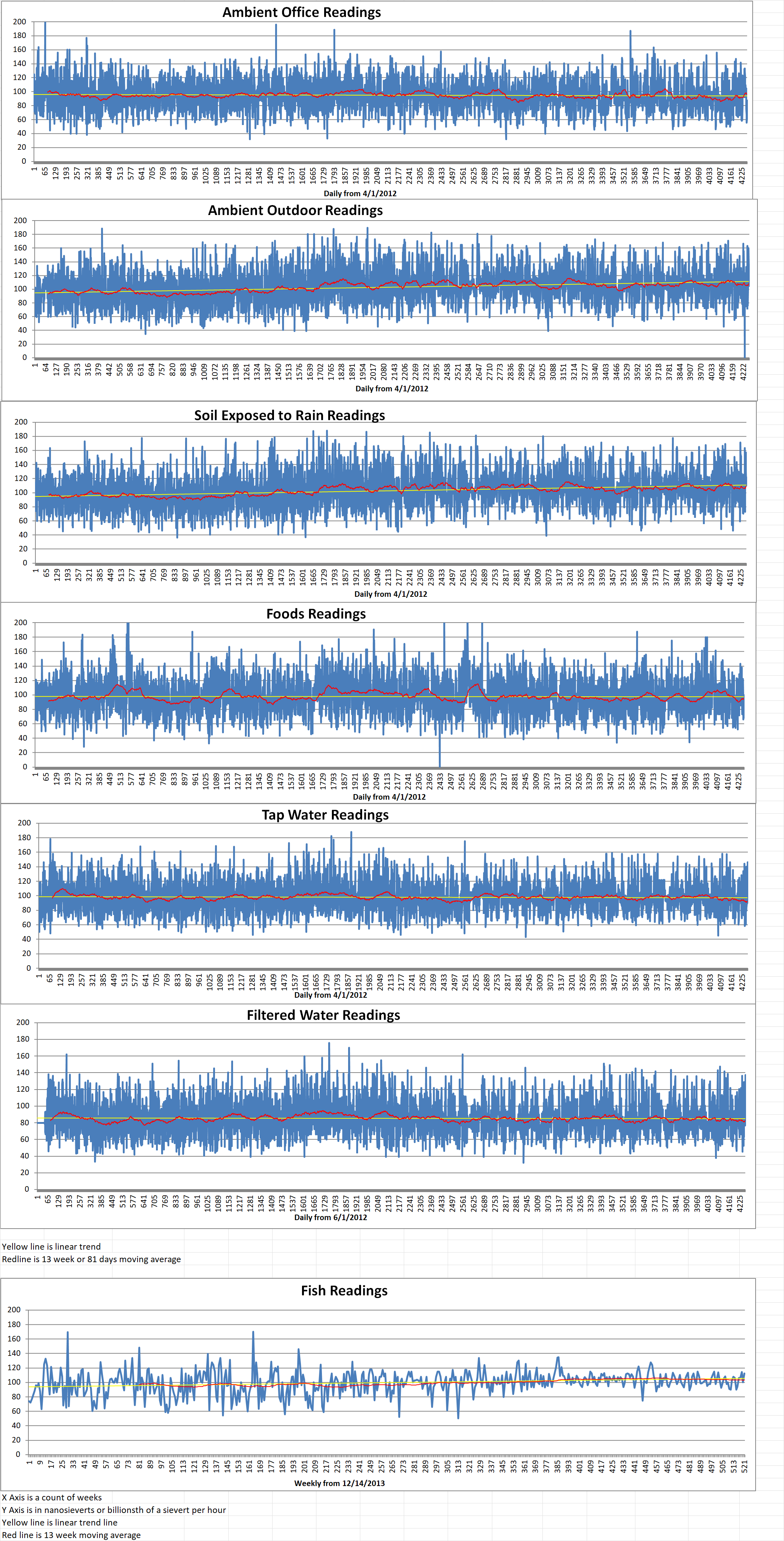
Geiger Readings for May 28, 2024
Ambient office = 87 nanosieverts per hour
Ambient outside = 117 nanosieverts per hour
Soil exposed to rain water = 115 nanosieverts per hour
Corn from Central Market = 100 nanosieverts per hour
Tap water = 146 nanosieverts per hour
Filter water = 137 nanosieverts per hour
-
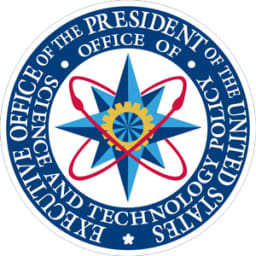
Nuclear Reactors 1398 – The U.S. Government Is Promoting Nuclear Power For Data Centers – Part 1 of 2 Parts
Part 1 of 2 Parts
The White House’s Office of Science and Technology Policy is strongly backing nuclear power a reliable and sustainable energy source for data centers.
About two years ago, nuclear energy was unwelcome as an important source of energy. One of the keynote speeches at Data Center World 2024 was delivered by Rian Bahran, Ph.D., Assistant Director of White House Office of Science and Technology Policy. He suggested a broadening of the definition of clean energy to include nuclear. This has opened the door to a reversal of the long-term trend of closing nuclear power facilities. It also heightened advocacy for onsite nuclear power in large data centers.
Bahran began on familiar ground. Data centers account for one to two percent of annual US energy consumption. In key metros, nuclear power consumption is much higher. Combined with pressure on the grid and the hefty power demands occasioned by AI, new ways need to be found to power data centers efficiently and sustainably.
One possible option is to site a new data center beside a nuclear power plant. Amazon Web Services (AWS) has acquired a twelve hundred acre data hub known as the Cumulus data center campus in Berwick, PA. It is directly connected to the two and a half billion gigawatt Susquehanna Steam Electric Station (a nuclear plant). An existing forty eight megawatt data center was already operating at the site. AWS plans to eventually extend that to as much as nine hundred and sixty megawatts. In order to power it, the company has entered into a ten-year plus energy supply agreement with Talen, the current owner of the nuclear plant.
Bahran said, “Wind and solar play a major role in decarbonization but we need a stable and firm nuclear backbone. Nuclear and renewables can be complementary.”
As a suggested alternative to huge new nuclear facilities, another way to introduce nuclear is small modular reactors (SMRs). Each SMR can generate an average of seventy seven megawatts.
Britt Burt is an energy analyst at research firm Industrial Info Resources. He said, “Hopes are rising about SMRs. About two gigawatts of new-build nuclear is scheduled to begin construction during the next five years.”
Data center operator Standard Power is planning to deploy up to two dozen SMRs on two data center campuses in Ohio and Pennsylvania. Reactors built by ENTRA1 will use SMR technology from NuScale Power. NuScale already has an SMR design approved by the Nuclear Regulatory Commission (NRC). NE Edge plans to build a one and a half million square foot data center campus beside a Dominion Energy nuclear power plant in Waterford, Connecticut.
Bahran made comparisons between a conventional reactor, SMR, and microreactor in terms of their sizes and generated power.
He said, “The latest generation of SMRs have small footprints, greater safety, better seismic capabilities, and provide reliable electricity.Small nuclear designs can grow modularly as the data center grows and won’t need to be refueled for up to eight years.”
Please read Part 2 next -
Nuclear News Roundup May 27, 2024
If regional communities don’t want a wind farm, why would they accept a nuclear power station? Theguardian.com
Anas Sarwar defends Labour’s nuclear weapons commitment us.news.yahoo.com
IAEA’s Grossi says it’s far from safe to restart Zaporizhzhia nuclear plant uk.news.yahoo.com
UN offers nuclear inspection deal to Iran’s new leadership thenationalnews.com
-
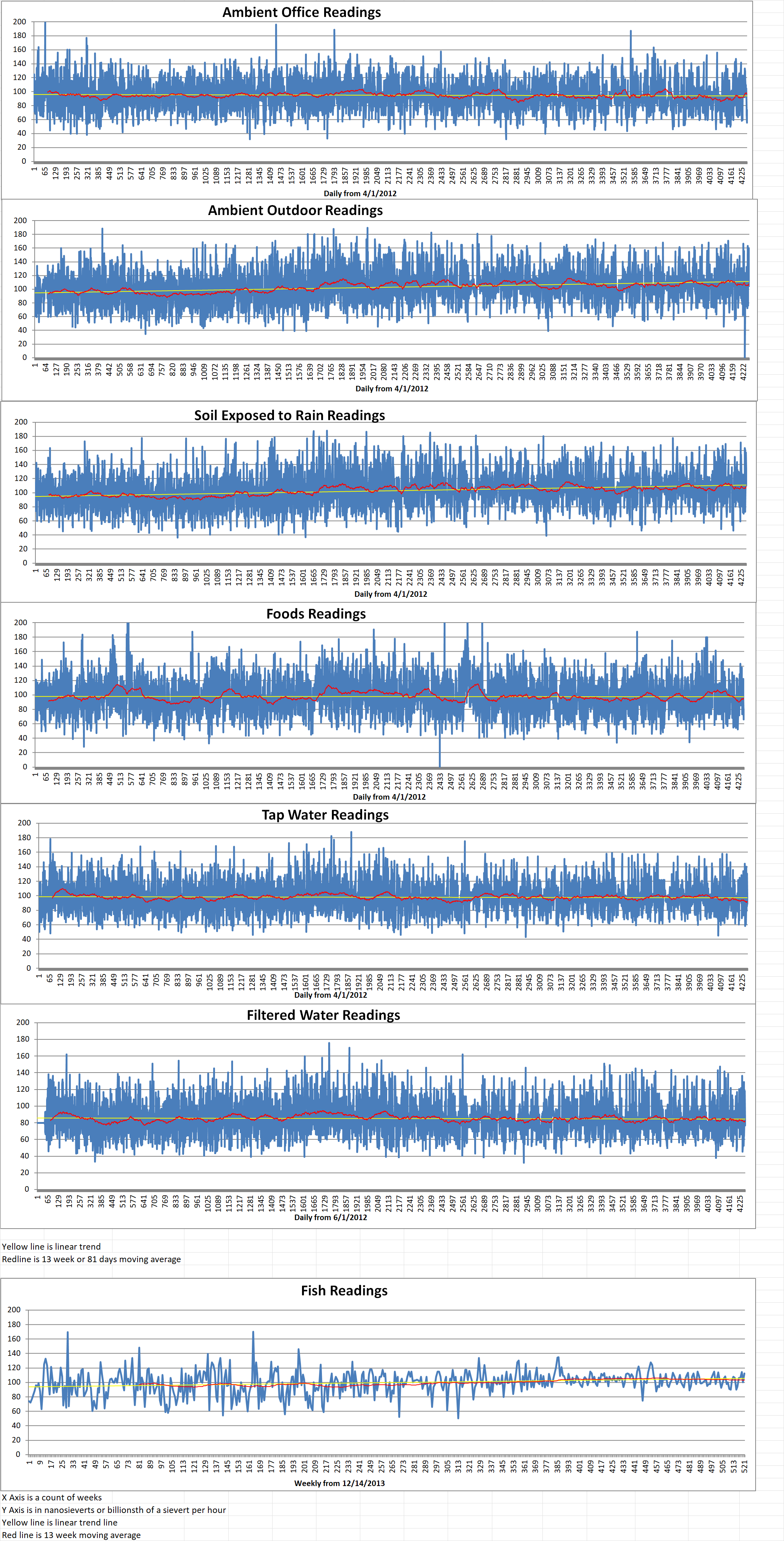
Geiger Readings for May 27, 2024
Ambient office = 74 nanosieverts per hour
Ambient outside = 123 nanosieverts per hour
Soil exposed to rain water = 122 nanosieverts per hour
Blueberry from Central Market = 68 nanosieverts per hour
Tap water = 94 nanosieverts per hour
Filter water = 79 nanosieverts per hour
-
Nuclear News Roundup May 26, 2024
Russia Not Currently Planning to Restart Zaporizhzhia Nuclear Power Plant, TASS Says usnews.com
US doubtful it could help S. Korea on nuclear-powered subs ca.news.yahoo.com
ENEC And CNNC Sign An MoU To Collaborate On Nuclear Energy Development And Operations cbnme.com
We can’t afford to cut America’s nuclear modernization program thehill.com
-
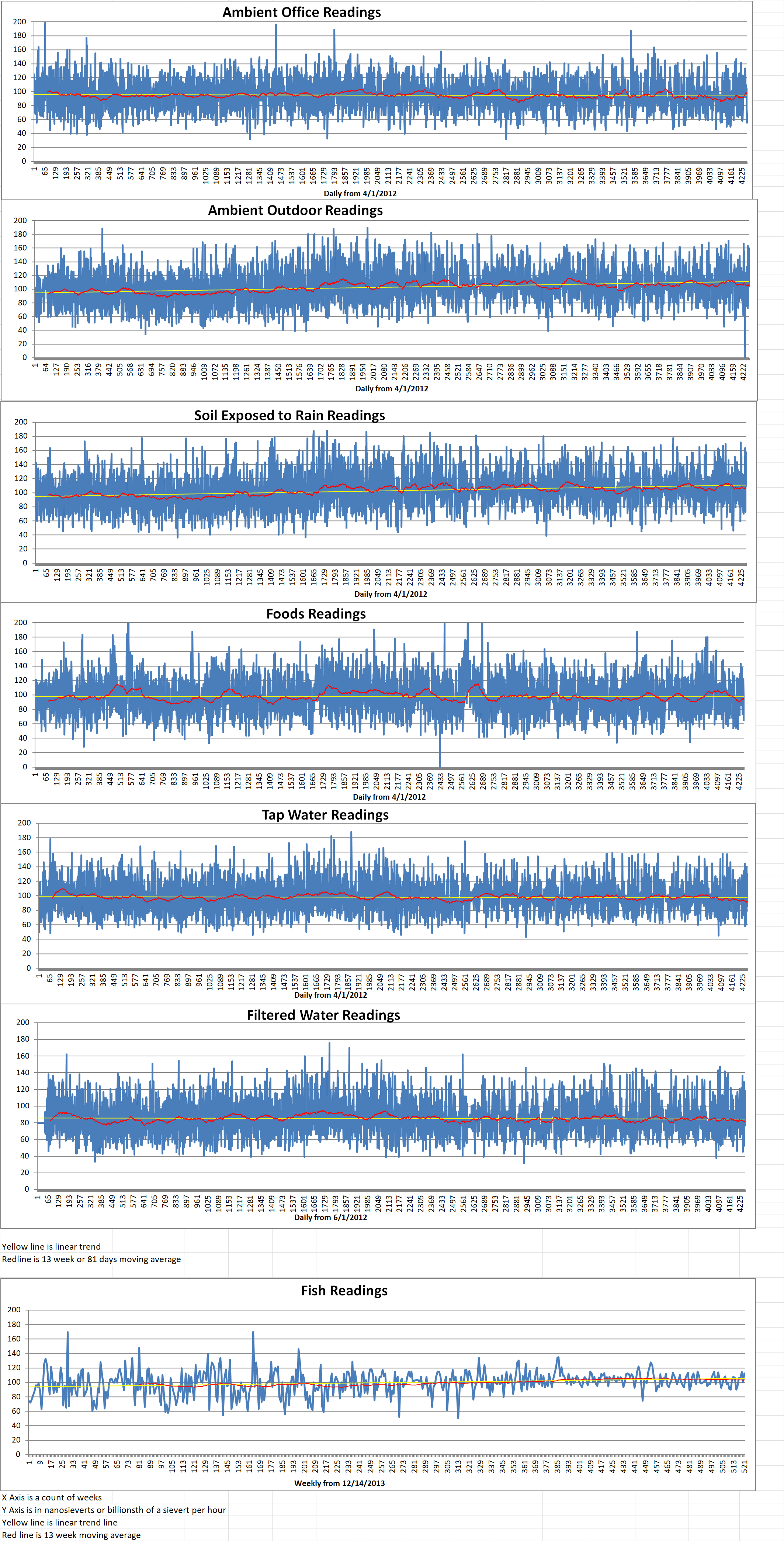
Geiger Readings for May 26, 2024
Ambient office = 62 nanosieverts per hour
Ambient outside = 105 nanosieverts per hour
Soil exposed to rain water = 110 nanosieverts per hour
Avocado from Central Market = 73 nanosieverts per hour
Tap water = 91 nanosieverts per hour
Filter water = 77 nanosieverts per hour
-
Nuclear News Roundup May 25, 2024
EDF completes GE Steam Power acquisition world-nuclear-news.org
Contract for refurbishment of Loviisa turbines world-nuclear-news.org
Argentina’s CAREM SMR project to have Critical Design Review world-nuclear-news.org
RWE permitted to dismantle Gundremmingen plant world-nuclear-news.org
-
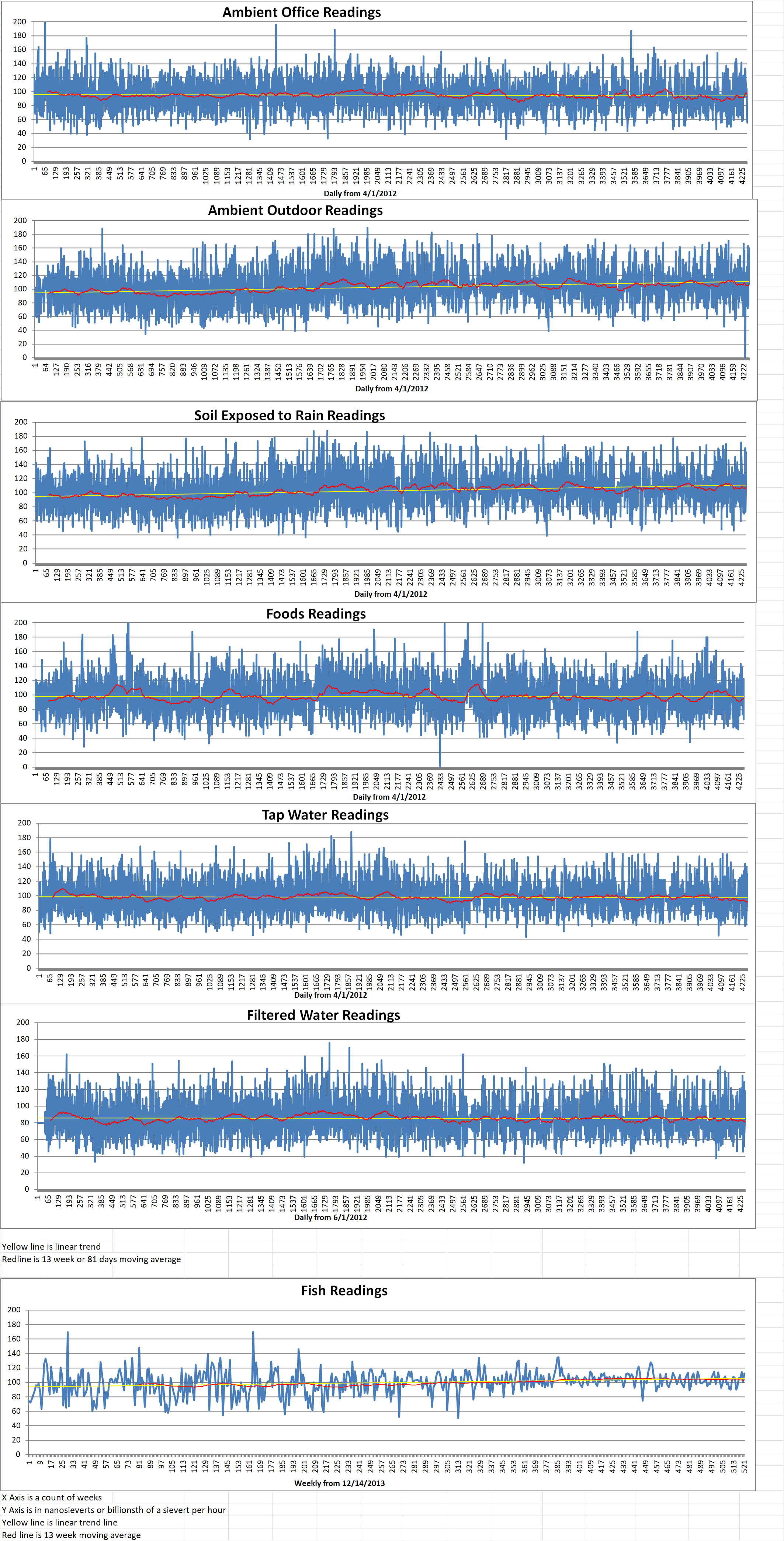
Geiger Readings for May 25, 2024
Ambient office = 56 nanosieverts per hour
Ambient outside = 129 nanosieverts per hour
Soil exposed to rain water = 129 nanosieverts per hour
Asparagus from Central Market = 80 nanosieverts per hour
Tap water = 89 nanosieverts per hour
Filter water = 80 nanosieverts per hour
Dover Sole from Central = 113 nanosieverts per hour
